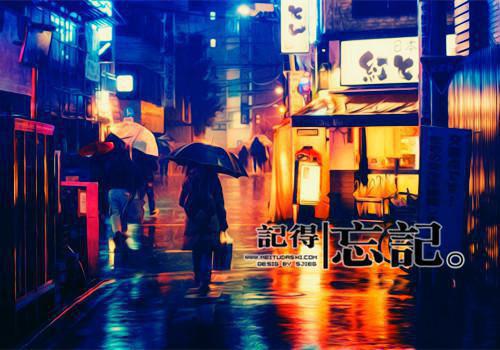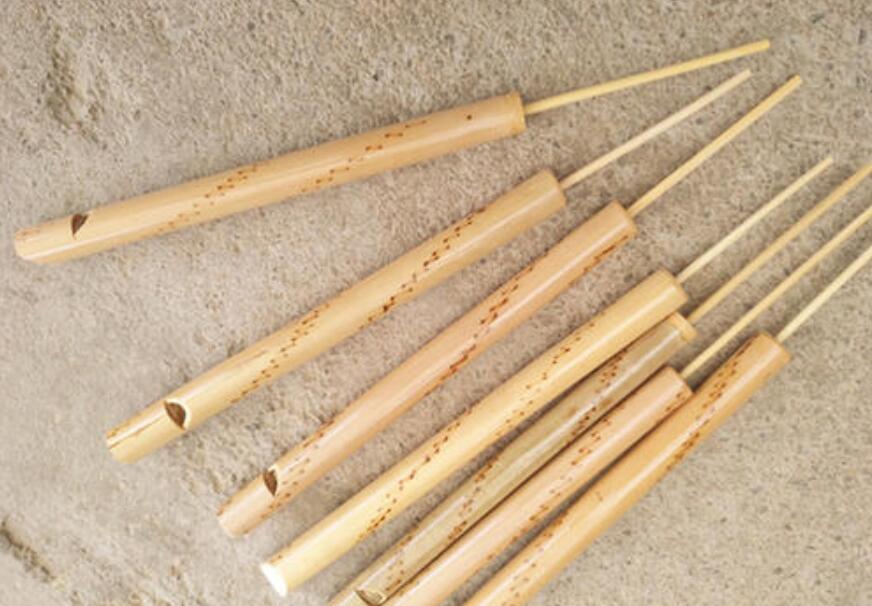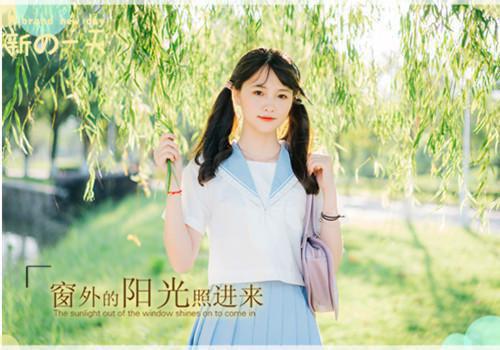帮您找了一篇有关重庆的英文介绍,单词难度适中,希望对您有所帮助...
Widely acknowledged as the largest industrial and economic center in southwestern China, Chongqing City is a popular destination for travelers with its hilly slopes, rivers, night views and spicy food.
Meaning "double celebrations" in Chinese, the city was built in the 11th century BC during the Zhou Dynasty. The city was founded in 1997. Prior to then, it was a city in Sichuan Province. Now Chongqing is the biggest city in China in terms of area and population.
Known as one of China‘s "Three Furnaces" (along with Wuhan and Nanjing), Chongqing is unbearably hot during the summer. The surrounding mountains seem to trap the heat. It is pleasant to visit the city in other seasons.
Also known as "Fog City" in addition to "the Furnace," Chongqing is covered with a thick layer of fog for an average of 68 days a year, usually in spring or autumn. The fog gives the place an air of mystery.
Spread across a number of low hills (average elevation of 400 meters), surrounded by mountains, and straddling the Yangtze River, Chongqing is a natural wonder.
The main features of the downtown area are the hilly slopes. Travelers soon learn to get used to the feeling of going up and down, up and down. Locals compare the terrain to San Francisco.
At night, climbing up onto one of the less-populated hills affords panoramic views of the city‘s night lights. Due to the city‘s hilly terrain, you can see a hierarchy of lights in all directions.
Lights in different colors sparkle and shine in layers and are reflected in the sparkling river, creating a mirage-like view -- it‘s hard to tell the river and the lights.
But it is to cruise down China‘s longest river, the Yangtze, passing through the famous Three Gorges that most tourists come to Chongqing. With over 100 cruise ships that begin their itineraries in the city, there is no better place to start a Three Gorges river tour.
Choingqing‘s hot spicy food is famous. The most well-known dish is the hotpot, which is a pot of boiling broth that you put various uncooked food items into. The meal always takes a long time, so it is good to eat it in the company of others.
Situated on the bank of the Jia Ling River, not far from its confluence with the mighty Yangtze is the ancient village of Ci Qi Kou, formerly known as Long Yin. Covering an area of some 1.2 square kilometres (291.6 acres) it is 14 kilometres to the west of Chongqing Municipality.
Chongqing itself has undergone many changes over the centuries, changes that have not been reflected in Ci Qi Kou with the consequence that the village conveys an impression of what Chongqing would have been like in the distant past. This fact has been recognized by the State Council and in 1998 Ci Qi Kou became a protected cultural site.
The history of Ci Qi Kou can be traced back for more than 1700 years. During the Ming and Qing Dynasties (1368-1911) it was famous for its production of porcelain. To date, over twenty old kiln sites have been discovered there. It is because of the importance of the porcelain industry that the name has been changed from Long Yin to Ci Qi Kou which being translated means Porcelain Village. However, the village was also an important supply post for shipping on the river, a fact that explains why there are so many shops lining the twelve lanes paved with their large flag stones that form the main routes. Here you will find many outlets for craftwork, groceries and the like as well as a horologist, photography supplies, drugstore and a tempting supply of roasted nuts and seeds. As one would expect there are also many teashops and restaurants to cater for the many visitors who come to see something of a way of life that has existed here for so many centuries.
The majority of the houses date from the Ming and Qing Dynasties, periods during which many masterpieces of Chinese architecture were created. Much of the two and three storey construction is of bamboo and timber. Blue bricks and pillars set off the snow-white walls that contrast in turn with vermilion doors and lattice windows. Black tablets and lanterns adorn the gates to complete the authentic and traditional appearance of the properties. The quietly flowing waters of the Jia Ling River pass by the front of the village and have been its lifeblood for as long as anyone can remember. For it was the river that brought goods and people here as well as carrying local products off to customers at home and abroad.
The three notable attractions of the village are the tea bars, the artists' studios and the Shu Embroidery workshops. Surprisingly, there are more than a hundred tea bars each with their own particular characteristics. Here friends enjoy a chat or meet to discuss business. So the tea bars offer the opportunity for you to meet the locals and also become acquainted with the unique folk opera.
The ateliers, where you may see the work of the local artists will be of great interest. It has been said that the more beautiful a place may be, the more artists it will attract. You are sure to be amazed by the quality of the work on show and in progress as the many artists record the local scenes with skill and dedication. With so many artists working in Ci Qi Kou, you will be spoiled for choice when seeking a souvenir of your visit
Artistic ability of another kind will sure to please your eye when you visit a Shu Embroidery workshop. The craft is famous throughout China and the skill of the women you will observe working in the village is unsurpassed. It will be difficult to decide whether to opt for a painting or a piece of embroidery as a reminder of your visit as the choice on offer is truly stunning.
Choice is no less a problem when it comes to deciding where to take a meal at one of the many restaurants. Local dishes include Mao Xue Wang, Qian Zhang Pi and JiaoYan Huang Sheng. All come very highly recommended. You may well ask 'What on earth are they?' It is our opinion that whichever you try, you will not be disappointed and will soon come to realise why they are so popular.
It is often said that a visit to China is a cultural experience. This is never more true than when you visit a place such as Ci Qi Kou where you will find the local residents dedicated to their traditional way of life, unaffected by modern influences to be found in the larger towns and cities. Above all, you will find a friendly welcome awaits you as the people of Ci Qi Kou share their special way of life with you for the duration of your visit.
Chongqing is the birth place of the hot pot in China. Once upon a time, it was a seasonal food designed to protect against the low temperatures and frigid winds of the winter. People would sit around a table, eat hot pot, and revel in the instant warmth that would flood their bodies. Hot pot has become more and more popular today, and it is widely enjoyed by people and regardless of seasons and regions.
Eating hot pot is a joyful experience. First, you need to choose the pot - spicy, pure or a combination of two - for the soup and dipping sauce. After the spiced soup boils with a hazy steam, fish, meat, bean curds and vegetables can be added. When the soup boils again, you can eat by dipping them in a little bowl of special sauce ¨Cbut be careful of the burning hot soup!In Chongqing, hot pot restaurants can be found everywhere and many have become very popular among the local people. Xiao Tian E (Cygnet Hot-Pot Palace) and Su Da Jie, E Zhang Men are the restaurants most suited for mass consumption. The hot pot restaurants in the Chongqing 5-star Harbour Plaza also serve decent food in a cozy environment
Introduction Surrounded by water on 3 sides, Chongqing is situated at the confluence of Yangtze River and Jialing River. With beautiful hills and mountains the "Mountain City" has long been reputed for its wonderful scenery. To its east, there is the famous Three Gorges on the Yangtze River; to its west, there are the 50, 000 stone figures sculpted on the cliffs during the Tang and Song Dynasties as the acme of perfection; in its south, the stone forests in Wansheng District seem superlatively made, yet they were created by nature; and in its north you cannot help meditating on the dinosaur fossils of 180 million years ago. The Fishing Fortress in Hechuan has long been widely known. The waterfalls, stones, forests, springs, and outdoor games in Simianshan Mountain in Jiangjing are fascinating. In the city proper. there are attractive Eling Hill, Loquat Hill, Night Scene of the Mountain City, Flowers in the Nanshan Park decorating the mountain city. The East, South, West, North, and Tongjing Hot Springs are like five pearls scattered in the suburbs. The Anti-Japanese Remains present the combat achievements in Chongqing by the Anti-fascist Allies during the Second World War. and the Red Crag Village and Geleshan Martyrs' Cemetery bear the glorious loyalty of the revolutionary seniors. For the city itself, it came into being three thousand years ago and got its name 800 years ago. On December 8, 1986, it was appointed one of the Historical and Cultural Cities of China by the State Council.
As one of the four municipalities under the Central Government (MDUCG), there are two things in particular immediately distinguish Chongqing from the other MDUCGs (Beijing, Shanghai and Tianjin). The first, it is unusually large in area, covering 82,400 sq km, 2.4 times the total area occupied by Beijing, Shanghai and Tianjin municipalities. The 43 urban districts and counties under its jurisdiction represent three quarters the total number governed by the three other municipalities. Secondly, it is unusually large in population. At the end of 1997, 30.429 million people lived in Chongqing, equivalent to 83 percent of the total population of Beijing, Shanghai and Tianjin. In Chongqing, however, more than 80 percent of the population is rural, a figure far higher than in the other municipalities.
Thus, of all the municipalities, Chongqing has the largest area and population and the highest proportion of peasants.
HISTORY Chongqing's history extends back at least 3,000 years, endowing it with much historical and cultural significance. Traces of man's presence have been found from as far back as the end of the Old Stone Age 20,000 to 30,000 years ago. From the beginning of the Shang Dynasty (c. 16th century B.C.) to the close of the Warring States Period (221 B.C.), it was the capital of the state of Ba. From the Qin Dynasty through the Eastern Han Dynasty (221 B.C.-220 A.D.), it was a prefecture also known as Ba. During the Sui and Tang dynasties, (581-907 A.D.), it was known as the sub-prefecture of Yuzhou, hence its standard byname "Yu.'' Subsequently, during the Northern Song Dynasty (960-1127 A.D.), it was renamed Gongzhou. In 1189, during the Southern Song Dynasty, Zhao Dun, later the Guangzong Emperor, was given the title Prince of Gong. Regarding this as an exceedingly joyous event, he upgraded its status to that of a prefecture and renamed it as "Chongqing'' or "redoubled celebration,'' the name it carries to this day.
The Ming and Qing dynasties (1368-1911) saw goods spin in and out of the city as merchants from the four corners gathered. In 1891 Chongqing became an open port and a customs house was established there. Shipping and trade and the financial and processing industries grew steadily more prosperous as the city came to link southwestern China and the upper reaches of the Yangtze River with the rest of the world. In 1929 Chongqing was formally declared a city. Following the outbreak of the War of Resistance Against Japan in 1937, the Kuomintang (KMT) moved the government from Nanjing to Chongqing. In 1939 the city was elevated to a municipality under the Executive Yuan. Beginning in 1940 it served as the wartime ``provisional capital'' for the KMT government, becoming China's political, economic, financial, commercial, transportation, cultural and diplomatic center. After the KMT government returned to the formerly occupied capital Nanjing in 1946, Chongqing returned to its status as a municipality under the Executive Yuan.
After the founding of the People's Republic of China in 1949, the Southwestern Sub-bureau of the Central Committee of the Communist Party of China (CPC) and the Southwestern Military and Political Commission were set up in Chongqing. The city was made a municipality directly under the central government and continued as the political, economic and cultural center of southwestern China. After the system whereby the nation was organized into large administrative zones was rescinded in 1954, Chongqing's status was changed to that of a city under the jurisdiction of Sichuan Province. In 1983 the central government decided to include Chongqing in the first group of cities where pilot reforms of the economic system could be tried out, its economic planning being directly supervised by the State Council. The state also gave the city provincial-level administrative powers over its economy and formally made it a foreign trade port. Since entering the 1990s China has been effecting its strategy of opening and developing the Yangtze River. Chongqing was listed as an open city. In September 1996, with the approval of the State Council, Sichuan passed administration over the cities of Wanxian and Fuling and Qianjiang Prefecture to Chongqing to govern on the province's behalf. In March 1997, the Fifth Session of the Eighth NPC discussed and approved a resolution rescinding Chongqing's then current status of city, declaring Chongqing a MDUCG.
Topography Chongqing may be found on the upper reaches of the Yangtze River covering the area 105x17'-110x11' E longitude and 28x10'-32x13' N latitude. The municipality, measuring 470 km from west to east and 450 km from north to south, borders Shaanxi Province to the north, Hubei and Hunan to the east, Guizhou to the south and its former province Sichuan to the west. Generally speaking, the land is higher in the north and south, sloping lower into the Yangtze River Valley in the center. For the most part, the terrain is characterized by low hills, mostly less than 500 meters above sea level. The municipality is home to the Daning River and is fed by the waters of the Jialing, Wujiang, Fujiang and Qijiang rivers, in addition to the Yangtze.
Chongqing has a humid subtropical monsoon climate, with little frost or snow, frequent clouds and mist, warm winters, hot summers, early springs and short autumns. The average temperature in January is 7.5 C and in July, 28.5 C, the mean annual temperature being 18 C. There is abundant rainfall, with annual precipitation averaging 1,000 to 1,400 mm. Rain is particularly plentiful in the nighttime during the weeks when spring passes into summer, giving rise to the common reference "night rain in the hills of Ba, (eastern Sichuan).''
Natural Resources More than 40 mineral products have been found in Chongqing; 25 varieties, most importantly coal, natural gas, strontium, pyrite, halite, bauxite, mercury, manganese, barium, marble, limestone and barite, have proven reserves. With reserves of 320 billion cubic meters, it is one of China's principal sources of natural gas. Reserves of bauxite (74 million tons), halite (300 billion tons), and strontium (1.85 million tons) lead the nation. Reserves of manganese and barium rank second and third respectively.
The areas abounds with biological variety, including more than 2,000 species of vascular plants. Some 380 animal species can be found locally, including the zibet (Asiatic civet cat), otter, clouded leopard, macaque, red-breasted golden pheasants, crown deer and other unusual wild animals. Rongchang is the nation's famous producing base for stud hogs, and Shizhu is a famous base to raise, process and export long hair rabbits. Chongqing has over 120 river fishes. Fish farming is popular in every district and county. Changshouhu Lake and Dahonghu Lake are fish raising bases of Chongqing.
Natural Scenes Chongqing proper is surrounded by the Yangtze and Jialing Rivers, so landscape is very beautiful. It is known as a "Mountain city" and also a "River city" because its buildings are constructed on hills by the rivers. Night scene of the mountain city is a wonderful sight. The South Hot Spring Park, North Hot Spring park, Jingyunshan summer resort and Nanshan park are situated in the near suburbs and Jiangjin Simianshan forest, Wansheng Yunan Stone Forest, Wulong Furongdong Cave, Xiannushan Grasslands, Nanchuan Jingfushan Forest Park are situated in distant suburbs. Along the Yantse River there are a large number of scenic spots of mountains, rivers, forests, springs, cataracts, gorges and caves such as the mighty Three Gorges, Daninghe and Xiaoninghe River valleys, Yunyang Longgang, Fenjie Heaven Pit and Earth Crevice, Wuxi Hongcheba Grasslands and Wushan Zhiyanhe River Three-Colored Cataract. Construction of the Three Gorges dam will form a 600 kilometers long and more than 1,000 square kilometers big lake on high gorges, an excellent tourist resort will thus be set up.
Historical Sites Historical sites can be sought after in Chongqing Museum, Hongyan Memorial Hall of Revolution, Geleshan Revolutionary Martyrs Tomb, Jiang Keshek's Residence, Zhang Zizhong's Apartment, Lingyuan, Kongyuan and some other Wartime Capital remains. Dazu Rock Carvings is the gem of stone sculptures of the later period. Hechuan Diaoyucheng city, that is called "the place where Whip of God was broken," is one of China's three ancient battlefields. Fengdu's Ghost City and Ghost King Stone Carvings, Fuling's Baiheliang (the forest of steles under water), Shizhu's Xituoyunti, Zhongxian's Shibaozhan, Yunyang's Zhang Fei Temple, Liangping's Shuangguitang Temple, Fengjie's Baidicheng City, Wushan's Lu You Cave and Ba people's hanging coffins and the natural scenes of the Three Gorges add radiance and beauty to each other.
Tourism The center of the old city of Chongqing is almost completely encircled by the two arms of the Yangtze and Jialing rivers. Row upon row of buildings climb the hills beside the rivers, giving rise to its nickname the "city of hills" and the phrase "night views of the hilly city" known well both at home and abroad. When night falls, the lights of a myriad families shine like stars, climbing to the sky, where they join the star-studded dome above, the flowing water and open sky each playing off the other's radiant beauty. Close by in the suburbs are many scenes of natural beauty, including the Southern and Northern Hot Springs and summer retreats such as Jinyun Mountain and the Southern Mountain. Further out can be found the primeval forests on Simian (Four-faced) Mountain in Jiangjin City, the Yunan Stone Forest in Wansheng, Furong (Hibiscus) Cave in Wulong County, the Gaoshan (High Hill) Grasslands on the Xiannu (Fairy Maiden) Mountain, and the Jinfoshan (Golden Buddha Mountain) Forest Park in Nanchuan City. Marvelous spectacles along the Yangtze River include the magnificent natural landscapes of the Three Gorges, the Large and Small Ninghe River Gorges in the Wushan Mountains, the Dragon's Vat in Yunyang, the fissures and hollows carved out of the living rock with divine skill as if by a demon's axe in Fengjie, the Hongchiba Gaoshan Grasslands and Xiabing Cave in Wuxi, and the Three-Color Waterfalls on the Ziyang River in Wushan. When the Yangtze Three Gorges Reservoir is completed, the 600-km long, 1000-sq-km manmade ``lake'' will delight tourists with the sheer walls of the towering gorges contrasting with the even waters below.
In addition to such natural splendors, Chongqing has many fascinating reminders of man's accomplishments, such as the Red Crag Village Revolutionary Memorial Hall
四级英语作文介绍重庆120词
1.located at southwest part of china, around the cross of Long River and jiangling River2.the yongest municipality directly under the Central Government of china3.climate is comfortable, is famous of changjiang sanxia, jinyun mountain4.is famous of chaffy dish. offer kinds of resterants and hotels for the vistors
怎么用英语介绍重庆
帮您找了一篇有关重庆的英文介绍,单词难度适中,希望对您有所帮助... Widely acknowledged as the largest industrial and economic center in southwestern China, Chongqing City is a popular destination for travelers with its hilly slopes, rivers, night views and spicy food. Meaning "double celebrations" in Chinese, the city was built in the 11th century BC during the Zhou Dynasty. The city was founded in 1997. Prior to then, it was a city in Sichuan Province. Now Chongqing is the biggest city in China in terms of area and population. Known as one of China's "Three Furnaces" (along with Wuhan and Nanjing), Chongqing is unbearably hot during the summer. The surrounding mountains seem to trap the heat. It is pleasant to visit the city in other seasons. Also known as "Fog City" in addition to "the Furnace," Chongqing is covered with a thick layer of fog for an average of 68 days a year, usually in spring or autumn. The fog gives the place an air of mystery. Spread across a number of low hills (average elevation of 400 meters), surrounded by mountains, and straddling the Yangtze River, Chongqing is a natural wonder. The main features of the downtown area are the hilly slopes. Travelers soon learn to get used to the feeling of going up and down, up and down. Locals compare the terrain to San Francisco. At night, climbing up onto one of the less-populated hills affords panoramic views of the city's night lights. Due to the city's hilly terrain, you can see a hierarchy of lights in all directions. Lights in different colors sparkle and shine in layers and are reflected in the sparkling river, creating a mirage-like view -- it's hard to tell the river and the lights. But it is to cruise down China's longest river, the Yangtze, passing through the famous Three Gorges that most tourists come to Chongqing. With over 100 cruise ships that begin their itineraries in the city, there is no better place to start a Three Gorges river tour. Choingqing's hot spicy food is famous. The most well-known dish is the hotpot, which is a pot of boiling broth that you put various uncooked food items into. The meal always takes a long time, so it is good to eat it in the company of others.Situated on the bank of the Jia Ling River, not far from its confluence with the mighty Yangtze is the ancient village of Ci Qi Kou, formerly known as Long Yin. Covering an area of some 1.2 square kilometres (291.6 acres) it is 14 kilometres to the west of Chongqing Municipality.Chongqing itself has undergone many changes over the centuries, changes that have not been reflected in Ci Qi Kou with the consequence that the village conveys an impression of what Chongqing would have been like in the distant past. This fact has been recognized by the State Council and in 1998 Ci Qi Kou became a protected cultural site.The history of Ci Qi Kou can be traced back for more than 1700 years. During the Ming and Qing Dynasties (1368-1911) it was famous for its production of porcelain. To date, over twenty old kiln sites have been discovered there. It is because of the importance of the porcelain industry that the name has been changed from Long Yin to Ci Qi Kou which being translated means Porcelain Village. However, the village was also an important supply post for shipping on the river, a fact that explains why there are so many shops lining the twelve lanes paved with their large flag stones that form the main routes. Here you will find many outlets for craftwork, groceries and the like as well as a horologist, photography supplies, drugstore and a tempting supply of roasted nuts and seeds. As one would expect there are also many teashops and restaurants to cater for the many visitors who come to see something of a way of life that has existed here for so many centuries.The majority of the houses date from the Ming and Qing Dynasties, periods during which many masterpieces of Chinese architecture were created. Much of the two and three storey construction is of bamboo and timber. Blue bricks and pillars set off the snow-white walls that contrast in turn with vermilion doors and lattice windows. Black tablets and lanterns adorn the gates to complete the authentic and traditional appearance of the properties. The quietly flowing waters of the Jia Ling River pass by the front of the village and have been its lifeblood for as long as anyone can remember. For it was the river that brought goods and people here as well as carrying local products off to customers at home and abroad.The three notable attractions of the village are the tea bars, the artists' studios and the Shu Embroidery workshops. Surprisingly, there are more than ...
英语作文《重庆游》
我帮你找了一篇,有中文也有英语,一定要采纳我哦。
中文: 重庆游 国庆期间,我去了重庆。
经过一路颠簸,晕晕乎乎的到了那里。
我就像刘姥姥进了大观园似的,左看看右瞧瞧,我一会儿对爸爸说:“看看,好高的楼啊!”一会儿又对妈妈说:“哇,奔驰诶!”看了一会儿,才觉得我们那个县城太落后了,简直像个小乡村。
啊,这回我算是大开了眼界,高高的楼房,奔驰的汽车。
一切一切都是那么新颖,让我眼花缭乱,好多在我们县城见不到的东西在那儿琳琅满目。
“如果住在这里该多好!”妈妈发出了感叹,“是啊是啊。
”我点点头,“不过那是不可能的,这里房子非常贵的,除非咱们是富翁!”我偷偷的说。
这里的食物让我垂涎欲滴,那里的风景让我流连忘返,那里的建筑高耸如云,那里的鲜花香气扑鼻,那里的树木四季常青。
那里的所有都使我迷恋。
我们去了朝天门,去的时候我们不知道方向,凭着路标找了几个回合,才找到了朝天门广场,可谓是“千辛万苦”啊。
“天哪!朝天门广场真漂亮啊。
”我发出了惊叹,江水从广场的下边环过,处处绿树成荫、花团锦簇,江上游船停泊。
刚去那里时,到处都弥漫着火锅的味道,不愧是“火锅之城”。
解放碑是商业中心,也是最繁华的一条街,每天有形形色色的人经过这里,每到整点钟就会:咚、咚……的敲。
解放碑周围有许多的商店、公司。
遗憾的是由于我晕车,所以很多好玩的地方都没有去,如果有机会,我一定会彻彻底底的游览一遍! 我爱美丽的山城雾都——重庆。
英语: Le swim chongqing During the National Day, I went to chongqing. After all the way'd turbulence, there. I like LiuLaoLao into the grand view garden like, look left right look for a while, I told dad: "see, good high floor!" For a while and said to her mother, "wow, Mercedes eh!" Look for a while, just think we the county was so far behind, it is like a small village. Ah, this time I be regarded as big open horizon, tall buildings, Mercedes cars. Everything is so novel, let me dazzling, many in our county to see things in there is dazzling. "If living here should be much good!" Mom made exclamation, "yeah, yeah." I nodded, "but that is impossible, the house is very expensive here, unless we be rich!" I secretly said. The food here let me drool, the scenery there let me linger over, the buildings there are clouds, where flowers towering trees, where aroma of evergreen. There's all make me mad. We went to ChaoTianMen, we don't know the direction, with a few rounds and signposts find ChaoTianMen square is found, it is "hardship". "Heavens! ChaoTianMen square so beautiful." I sent a marvel at the bottom of the river, from the square, green, ring, blooming everywhere on the river cruise ship was docked. Just go there, everywhere reeks of pot of flavor, not the kui is a "hot pot city." The jiangbei is the commercial center, also is one of the most prosperous each day, of a variety of people to pass through here, each to the whole o 'clock will: dong, dong... The knock. There are many stores around the jiangbei, company. Unfortunately since I carsick, so a lot of fun there is no place to go, and if I have the chance, I will complete tour again! I love the beautiful mountain city chongqing WuDou -.
2010高考重庆卷英语作文范文
高考英语作文 重庆卷:满分范文一 Dear Amy, I m Li Hua from Xinhua Middle School of China. I m sorry to hear that you got the lung cancer which brought you great pain. But you should realize that you are young and have a promising great future. So, stand up and fight against the disease! I m sure you will win. It is reported that the America anti cancer association will donate three cents upon every comfort letter you receive. So I will tell your situation to all my friends and ask them to write to you. In that way, you will get enough money for you to be cured. Hope you can be well soon. Yours, Li Hua 高考英语作文 重庆卷:满分范文二 Dear Amy, My name is Li Hua, a student from Xinhua Middle School in China. I have got to know that you got lung cancer and are in great pain. Sorry to hear that. But since you are young, the disease won t be very serious and you can beat it. It is said that the more letters you receive, the more money the America anti cancer association will donate. For every letter, they give three cents. So I will try as hard as possible to persuade my friends to write to you so as to help you get enough money to cure the disease. I m sure you will be OK soon.
要求介绍自己的英语作文40
Hello, everyone. I'm glad to introduce myself to you. I'm from Chongqing. I am a teacher. I have many hobbies, such as taking notes, reading, listening to music, dancing, singing, playing basketball and swimming. I think we should treat everyday as the last day for us to live in the world. That is me. I like making friends. I hope I can be your friends. 大家好。
我很高兴向大家做个自我介绍。
我来自重庆。
我是一个老师。
我爱好很广泛,例如:记笔记、看书、听音乐、跳舞、唱歌、打篮球以及游泳。
我认为我们应该把我们的每一天都当作在这个世界的最后一天来过。
这就是我。
我喜欢交朋友。
我希望能成为大家的朋友。
英文介绍五年前的重庆,五年后和现在的也要写
"Open window , this a little bit amazed city city change every day"! When Mrs. United Kingdom consul general Aileen to Chongqing accepted the correspondent exclusive interview a few days ago,have sent out such gasping in admiration to Chongqing. Be speaking flatly fluent Chinese , Aileen happy to introduce that, United Kingdom has set up about 3 enterprise at present altogether in Chongqing investment , business performance most have been all very good , several family among them so to speak have been "especially good ", for instance , the Yangtze acetophenetidins with investment of 250 million U. S. dollar project is a very good example. China-UK joint venture managing is successful, support being benefited from industrious and government of both sides entrepreneur, method of shareholder also hopes English Fang He Zhong expanding the scale of investing in Chongqing further. That she mentions fairly specially , United Kingdom invests in another "secret of success" getting success in Chongqing is meticulously, to choose the buddy who works together , to fight commonly , this lets United Kingdom enterprise enjoy not shallow benefits to some extent. Aileen said For 2 years half are middle "in Chongqing , I arrive at development of Chongqing every day all in first-hand experience! Enormous change being able to see this city from official statistics data, economic outputs are in steady-state growth; The at one's side change from me also can see the city change, new construction site , large-scale city construction, vigour having all demonstrated a city". She introduces , all very satisfied United Kingdom entrepreneurs Chongqing puts the development environment in good order in course of unceasingly, especially a batch of the regulation examining and approving the project and the obsolete document is canceled, driving force this is developed for English money enterprise having poured the new in, "Chongqing is getting better as changing more in course of"! Aileen said
...是重庆第一职业中学幼教专业的学生,就以上信息写一篇自我介绍的...
Chongqing Hot Pot: Hot pot - is the most famous and favorite dish in Chongqing. Chongqing local people consider the hot pot a local specialty, which is noted for its peppery and hot taste, scalding yet fresh and tender. People gather around a small pot boiled with charcoal, electric or gas filled with flavorful and nutritious soup base. You have a choice of spicy, pure and combo for the soup base. Thin sliced raw variety meat, fish, various bean curd products and all kinds of vegetables are boiled in the soup base. You then dip them in a little bowl of special sauce. Be careful since the spicy soup base is burning hot. First eaten by poor boatmen of the Yangtze River in Chongqing area and then spread westwards to the rest of Sichuan. Now is a very popular local flavor and can be found at every corner of the city. There are a great variety of hotpots, including Yueyang Hotpot, Four Tastes Hotpot, Yashan Hotpot and Fish Head Hotpot. If you are adventurous enough, you can basically cook anything with hot pot, e.g., pig's brain and duck's kidney. Chongqing people love their hotpot, especially when the weather is steamy. The fire dances under the pot, the heavily oiled and spiced soup boils with hazy steam, and the people are bathed in sweat. Although hotpot can be found wherever there are street vendors or small restaurants, chongqing Hot pot has the greatest variety and is known for its delicious soup base and dipping sauce. Chongqing Malatang: The other famous local food is hot and spicy Mala Tang. Literally, "ma" means numbness in the mouth, "la" is chili hot and "tang" means piping hot. Mala Tang, with various raw ingredients cooked in a communal pot of steaming stock blended with spices, originated in Sichuan's largest city, Chongqing. The double-sided soup pot, placed on a central table burner, is the focal point of the meal. Powerfully hot Mala Tang soup and fresh tasting chicken broth, side by side, are popular. Ingredients include fresh sliced abalone, sea cucumber, hog tendon, Beijing cabbage and beef dumpling, prawns, carp fish fillet, bean curd, chicken fillet and vegetables. The excellent dipping mixture of sesame oil, chili sauce, peanut sauce, chopped chilies and garlic combine to make magic. Savory tidbits are appetizingly tasty - egg coated glutinous square, crispy spring roll, fried buns, eight treasure black rice and water chestnut jelly.
以《美丽的重庆》为题!写一篇100单词左右的英语作文!急…
In April this year the AAPP was held in Chongqing . The foreign friends were warmly welcomed by Chongqing people . The foreign friends said ,“ Chongqing has changed a lot . The streets are clean , the lights are bright , the city is beautiful , and the people are friendly . Chongqing will be remembered and her tomorrow will become better and better .









 亖呉?盀
亖呉?盀

